The Breguet Classique Chronométrie 7727 and its Innovations
Paying tribute to Abraham-Louis Breguet's innovative spirit.
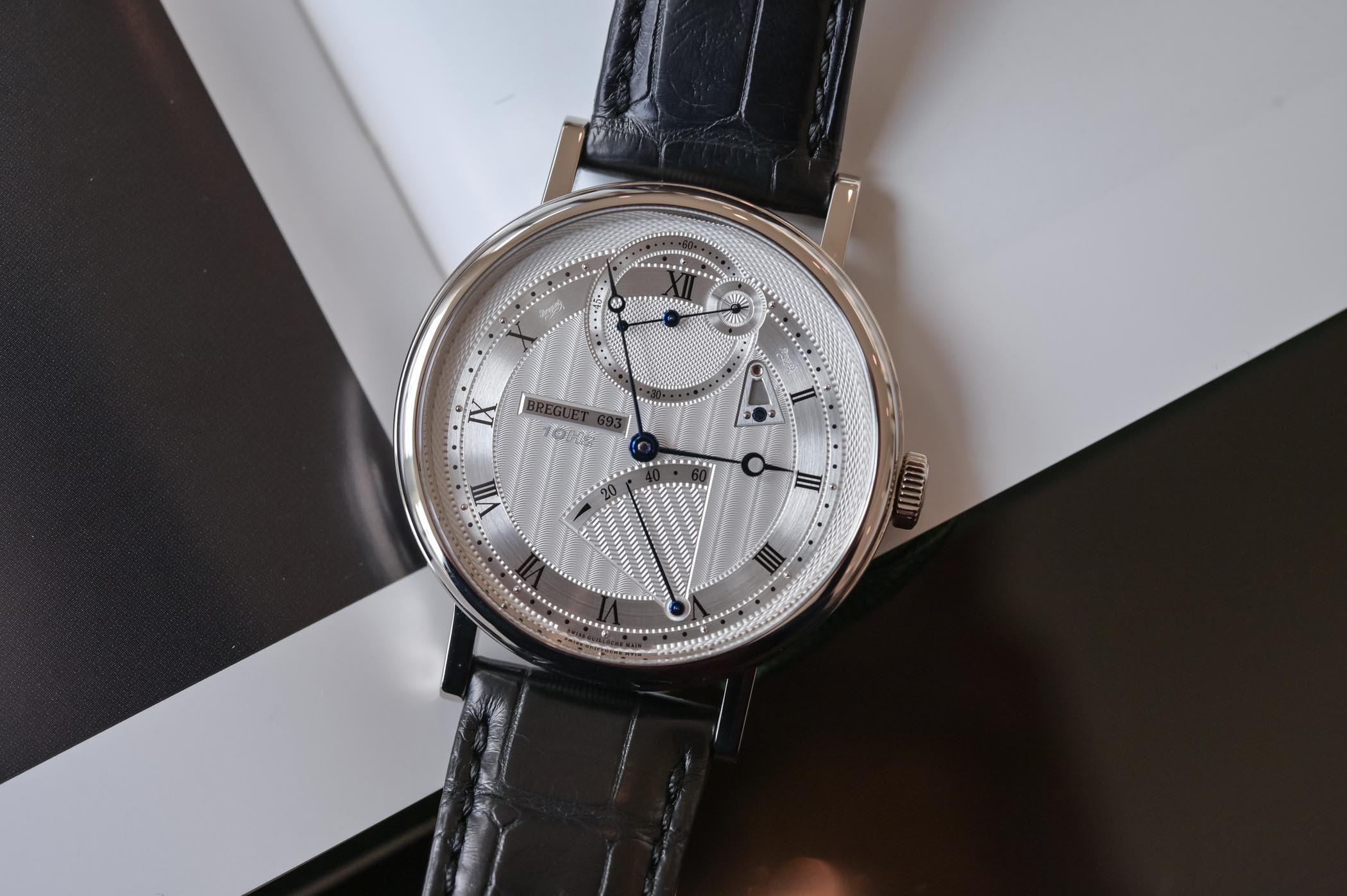
When you think about Breguet, you probably picture a classic watch with elegant proportions, a guilloché dial and a beautifully executed movement. This is partially true, but there’s more to be said about the brand. Certainly, it is one of (if not the) most historically important brands, mainly because its founder, Abraham-Louis Breguet, is behind most of the innovations of the 18th/19th century, and most of them are still in use today. As a tribute to this glorious and rich past, the brand still retains its spirit of innovation beautifully demonstrated with this Breguet Classique Chronométrie 7727. Not a new watch, but one we wanted to explore again.
Breguet, the innovator
We’ve said it in the past and we’ll say it again: Abraham-Louis Breguet (10 January 1747 – 17 September 1823) is arguably the most important watchmaker of all times. Period. His influence on watchmaking, on chronometry and on anything related to the measurement of time is, still today, a tangible reality. Many of the technical solutions that are in use in our modern watches were developed, invented or improved by A.L. Breguet himself, more than 200 years ago. That is an incredible legacy to live with, and Swatch Group, the current owner of the modern Breguet brand, is simply not allowed to mess up with a name of this stature.

Abraham-Louis Breguet’s influence on watchmaking is still tangible in our modern, 21st-century mechanical watches.
Breguet’s masterpiece is, without doubt, the invention of the tourbillon regulator – a small device that aims at counteracting the effect of gravity on the regulating organ of a watch (very useful on a static pocket watch, less on a modern wristwatch… but still mechanically fascinating). Yet, reducing Breguet’s professional life to the tourbillon would be an insult to the genius of this man. Some of the mechanisms or devices that we still use in today’s watches were born in his mind or improved to the point of becoming functional realities.
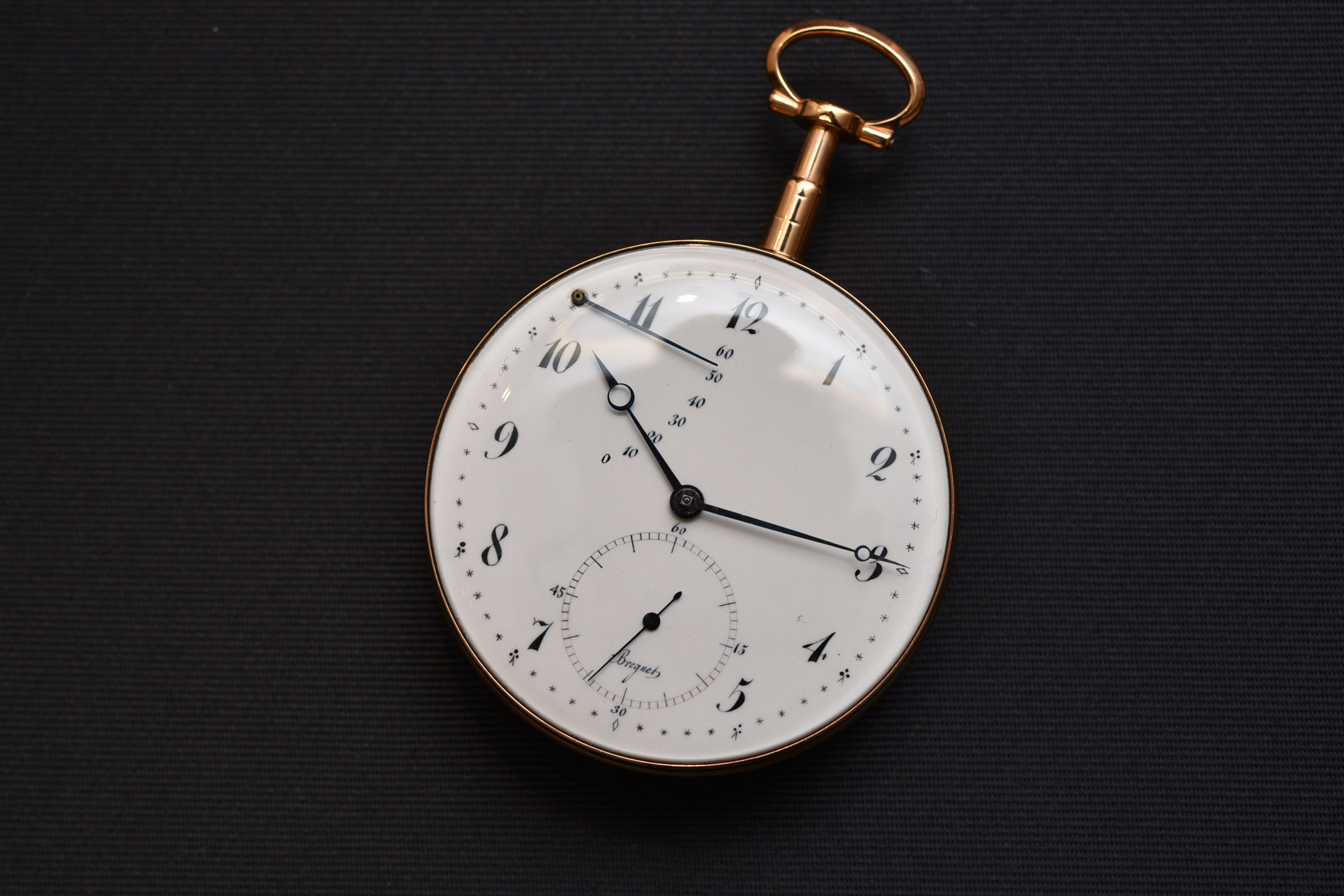
Over his career, which led him to Switzerland and to France, Breguet produced over 17,000 watches (and no two Breguet pieces are exactly alike…) for some of the most influential personalities of the day. In his constant spirit of experimentation, A.L. Breguet innovated and created multiple devices, such as the tourbillon, the perpetual calendar, the equation of time or the gong springs for chiming watches. Some of his inventions are also much more down to earth, but no less capital, such as the creation of the pare-chute (an early shock-protecting device), the Breguet overcoil or the first-ever wristwatch. He also drastically improved the concept of the automatic watch.

Finally, and this is something that fewer know, Abraham-Louis Breguet might simply be the first-ever watchmaker to have created a brand, with a clear identity, design codes and clever tricks to protect his creations from counterfeiting – yes, hard to believe, but fake Breguet watches existed in the early 19th century. This specific topic, the so-called “unmistakable signs”, is the main focus of our in-depth video. Let’s get straight to the point… A.L. Breguet’s influence on watchmaking is immense and, as such, Breguet might simply be the most historically important name and brand of the industry… and the Swatch Group has to live with this, and to respect it.
Now, many of our readers might be aware of that, but this introduction to the man behind Breguet was necessary, just to remind ourselves of what’s important… And because the watch we’re looking at today – which isn’t a novelty, but one we’ve decided to take a closer look at – has a mission! A big one. Demonstrating that Breguet (the brand) is true to the man who created the brand (Abraham-Louis). Quite a challenge. Let’s look at the Breguet Classique Chronométrie 7727 and see if the spirit of innovation and the design codes are still alive. (Spoiler alert: it does.)
The superb technology behind the Chronométrie 7727
For once, we’ll start this in-depth article with a close look at the mechanics. Even though the design and execution of this piece are spectacular, what’s hidden inside its movement is even more important. The Chronométrie 7727 is among those watches that fly under the radar. There’s the surface of the watch, its delicate case and dial, and then there’s what’s really matters, what’s only revealed to connoisseurs, the ultra-modern technology that you’ve imagined in spaceship-like designs but never on board such a classic watch.
The Breguet Classique Chronométrie 7727 is anything but demonstrative. Its very raison d’être is explicitly stated in its name: chronometry, the art of precision and accuracy. A sort of back-to-basics of what horology really means. As much as we love to see grande complications and out-of-this-world displays, the main objective of watchmaking was (and should still be) to provide the most accurate indication of the time. There are multiple ways to achieve this, by means of reduced tolerances on the parts and insanely precise production processes (e.g. Rolex or Omega), systems to provide constant force, finely regulated escapements or exotic materials (silicon being the benchmark).
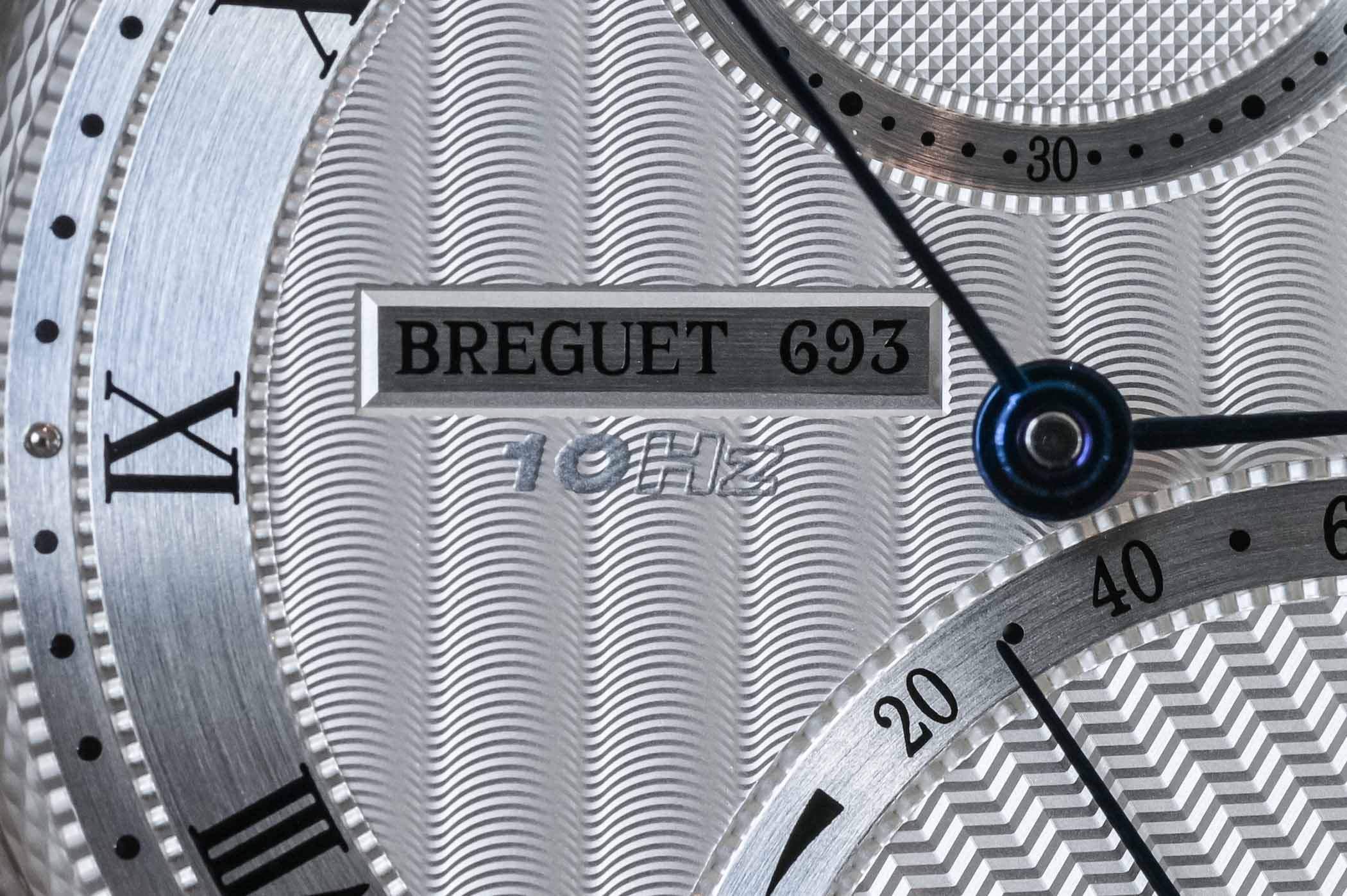
In the case of the Breguet 7727, it’s all about exploring new territories, increasing the frequency of the regulator and using magnetism, one of the worst enemies of a watch, to improve precision. The idea behind this watch was to increase the frequency of the regulating organ; the faster the balance and escapement beat, the better the accuracy can (theoretically) be. Most modern watches beat at 4Hz or 28,800 vibrations/hour, regarded as the best compromise between accuracy and stress on mobile parts. Some watches push it a bit further, with a 5Hz frequency of 36,000 vibrations/hour, like the Zenith El Primero or Grand Seiko, still with relatively traditional technologies.
With the Classique Chronométrie 7727, Breguet duplicates it to achieve a 10Hz frequency, or 72,000 vibrations/hour, which could theoretically enhance the overall accuracy of the watch. Because it oscillates with a higher frequency, it has a better capacity to compensate for its own errors. The main issue with high-frequency is that it creates more stress on the moving parts, more friction and thus less reliability – friction is extremely good at ruining the performance of a watch in the long run. The solution lies, of course, in silicon.
Silicon is a material widely known for its anti-magnetic properties, but it has a lot more to offer. It can be produced with incredible precision, it is lighter than most metals, it is self-lubricating and eliminates the need for oils (which will inevitably degrade). All of these factors allow the regulating organ to run faster. In the Classique Chronométrie 7727, the pallet lever, the escape wheel and the double hairspring are made of this material – the latter can be seen from the back, with its openworked architecture and its purple-blue colour.
Still, Breguet didn’t stop here. The really big innovation in this 7727 is how it relies on magnetism to achieve greater precision. Magnetism, as you might know, is to the regulating organ what kryptonite is to the man in red underwear. For years, escapement parts were crafted from ferrous alloys… No need for a drawing here. Bring a magnet next to watch and you’ll see the result immediately and in the long run. Solutions were found, such as soft-iron cages and recently, silicon – which is anti-magnetic and is one of the key elements behind Omega’s 15,000 gauss magnetic-resistance. Having most of the regulating organ parts made in this modern, anti-magnetic material, Breguet decided to take even greater strides, not by counteracting magnetism but using it as an ally to enhance the performance of its watch… That was in 2014 and is still a true revolution today.
The magnetic pivots are revolutionary. They fight friction, gravity, shocks… and thus improve accuracy and efficiency.
The Breguet Classique Chronométrie 7727 features “magnetic pivots”. In a traditional watch, the balance wheel is held in place by a vertical axis known as the “balance staff”. It is positioned between two lubricated jewels named end-stones (most of the time with a shock absorber) to reduce friction. The mechanical contact at this point generates a great deal of friction. The genius of this Breguet lies in two micro-magnets (one on each side of the balance staff) to stabilize the balance wheel and hold it in place. As such, the regulating organ is suspended by magnetic gravity.
As you can see in the technical drawing above, the balance staff is not entirely free of mechanical connection, as one of the two magnets (the one on top) is slightly stronger than the other, meaning that both parts touch. Even though, friction is dramatically reduced, allowing the regulating organ to oscillate almost freely – which, incidentally, improves the movement’s efficiency by reducing the energy consumption. In addition to that, these magnets act as shock absorbers. When a shock occurs, the balance will be automatically re-centred by the magnetic fields. Finally, as it is practically free of mechanical contact, the effects of gravity on the balance are also greatly reduced (should remind you one of Breguet’s most successful inventions…).
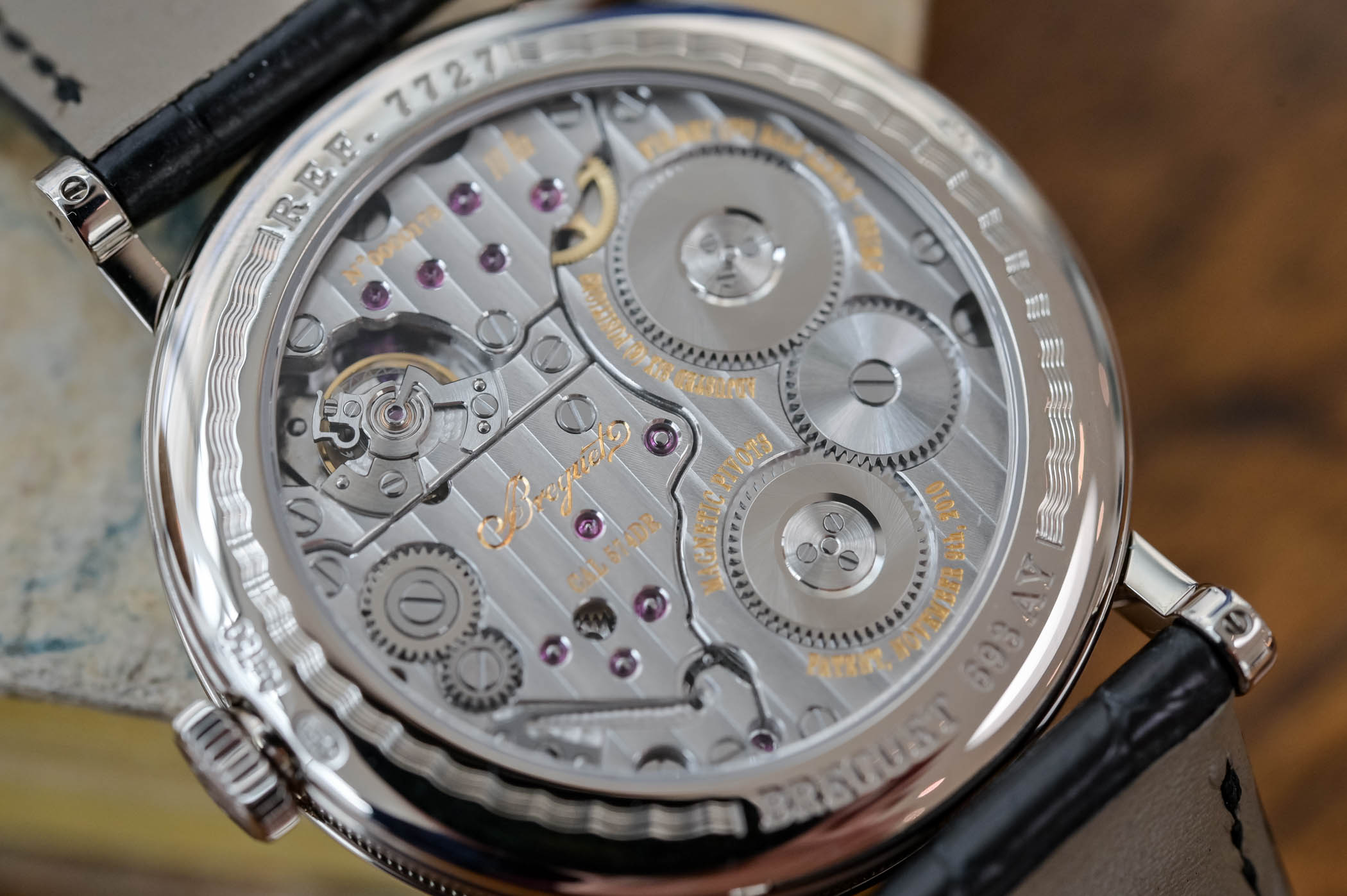
This was possible only because all the critical parts of the watch – escape wheel, pallet lever, balance spring – are made from anti-magnetic silicon. Best of all, this isn’t a concept, but a real-world watch, which can be bought in stores. No wonder why this watch won the Aiguille d’Or at GPHG in 2014. It is simply impressive!
The Breguet Classique Chronométrie 7727 as a timepiece
Now that we’ve looked in details at what’s hidden underneath the sapphire caseback of this 7727, it is time to look at everything else… And here, no debate, this Classique Chronométrie is 100% Breguet. It features all the ingredients that make it both easily recognizable and historically relevant with Abraham-Louis’ creations – the so-called unmistakable signs.
Despite being innovative and modern (not to say avant-garde) mechanically speaking, the Classique Chronométrie 7727 is all about elegance, timelessness, superb execution and that slightly outdated design that makes Breguet watches so desirable. First, the case of this watch is on the large side for a dress watch, with a 41mm diameter – mainly due to the large movement and the number of indications on the dial. Still, it retains a slim profile of 9.65mm. The lugs are traditionally welded to the case and feature the screw-pins to hold the strap in place. The case, available either in 18k white gold or 18k rose gold (both having the same dial), is entirely polished and, as you would expect, is adorned with a fluted decoration on the sides (the so-called cannelures). The lugs are straight but not too long.
We can’t review a Breguet watch without looking at the dial. And this Classique Chronométrie 7727 is no exception to the rule with its incredibly detailed decorations. The dial is hand-guilloché by specialized craftsmen, internally at Breguet, on a solid gold plate. On this watch, no fewer than six patterns have been applied, in order to create differentiated sectors for each of the indications.
- Waves in the centre
- Clou de Paris for the small seconds sub-dial at 12 o’clock
- Sunburst pattern for the 2-second running counter at 1 o’clock
- Chevrons for the power reserve indicator at 5 o’clock
- Cross-hatched for the hours chapter
- Barleycorn pattern for the outer edge of the dial
In addition to that, the rings with numerals or markers are brushed and the (not so) secret signature is engraved on each side of the small seconds. This description could easily make you think that this dial is a mess… On the contrary, it helps to separate the functions and enhance legibility – one of A.L. Breguet’s main objectives when he started to use guilloché. The execution is simply superb and the result, which might be unbalanced, is full of charm. The blued steel hands are classic Breguet with the so-called eccentric “moon” tip.
Two things are to be noted on this dial, besides the classic indications for the hours/minutes, the small seconds and the power reserve indicator. The first is a running indicator (on the right side of the small seconds), which rotates once every two seconds. Useful? Not really, but it animates the dial and reminds us of how fast the regulating organ is beating. The second is a triangular bridge positioned at 2 o’clock, which is the reverse side of the magnetic pivot that holds the balance in place – and reminiscent of antique pare-chute bridges. Once again, maybe not entirely necessary but not something that would alter my overall opinion of this watch.
To end up with the dial, you’ll note a cartouche at 9 o’clock with the unique number of the watch – which can help trace it in the brand’s archives – and below it, the 10Hz mention… Probably the least convincing point on this watch. Not only is the mention of the frequency unnecessary, but the font used is way too modern compared to the overall look of this Classique Chronométrie 7727. Apart from that, this Breguet is everything you would expect from the brand: elegant, classic, slightly old-fashioned (in a good way) and despite the revolutionary mechanism, easily wearable – just like any other dress watch by Breguet.
Turning the watch over and you’ll see a movement that is beautifully executed and decorated. The shape of the bridges is complex, even though it doesn’t reveal much. The bridges are decorated by hand, with Geneva stripes and polished bevels, the main plate is circular grained and the wheels are adorned with soleillage. The two barrels, which provide a stable flow of energy, allow for a comfortable 60h power reserve. As we mentioned previously, the abundance of technology isn’t just for our pleasure: the accuracy of the movement is rated to -1/+3 seconds/day.
Thoughts
I have been genuinely impressed by the Breguet Classique Chronométrie 7727, not only because of its superior technology (which is still, to date, the only watch on the market relying on this concept) but because it manages to combine it with a restrained, elegant habillage. Everything in this watch is Breguet, whether its design or its spirit of innovation. In this instance, it is a great tribute to the name of its founder. It isn’t a watch with a name randomly printed on its dial, but one that has been done with all due respect to one of the most important watchmakers in history.
Now, is this watch perfect? No, but I’m talking minor flaws that won’t change my final opinion. I’d love to see it in a more compact case of 38mm or 39mm. Men with larger wrists won’t have any issue with the Classique Chronométrie 7727 but for me, 41mm is a bit too much. Second, the 10Hz mention on the dial should be removed. Period. Finally, I think the decoration of the movement could be slightly improved and be more demonstrative, even though it would mean a different price range. And with a price just below EUR 40k, this watch feels very reasonable when you consider the amount of technology that it packs and the execution of its dial…
By all means, the Classique Chronométrie 7727 is a game-changer, a watch that relies on technology for the right reasons and clearly not to show off. What surprises me is that it is not always fully understood, and the fact that no other watch has been created around this technology yet.
Price and availability
The Breguet Classique Chronométrie 7727 is available at boutiques and retailers in two versions, only differentiated by their material and strap – white gold on black strap as presented (ref. 7727BB/12/9WU) and priced at EUR 39,400, and pink gold on brown strap (ref. 7727BR/12/9WU) priced at EUR 39,000.
More details at breguet.com.

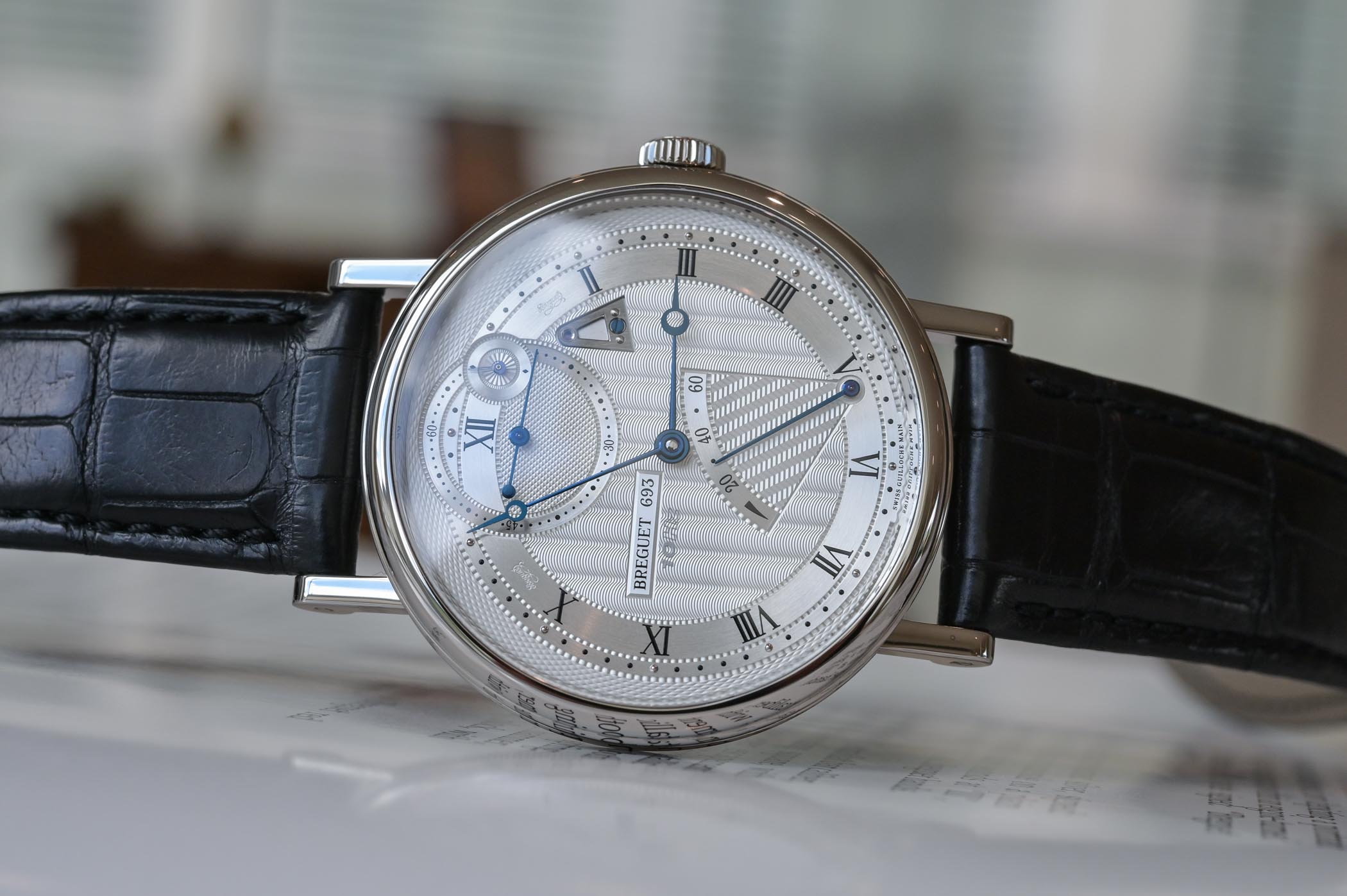
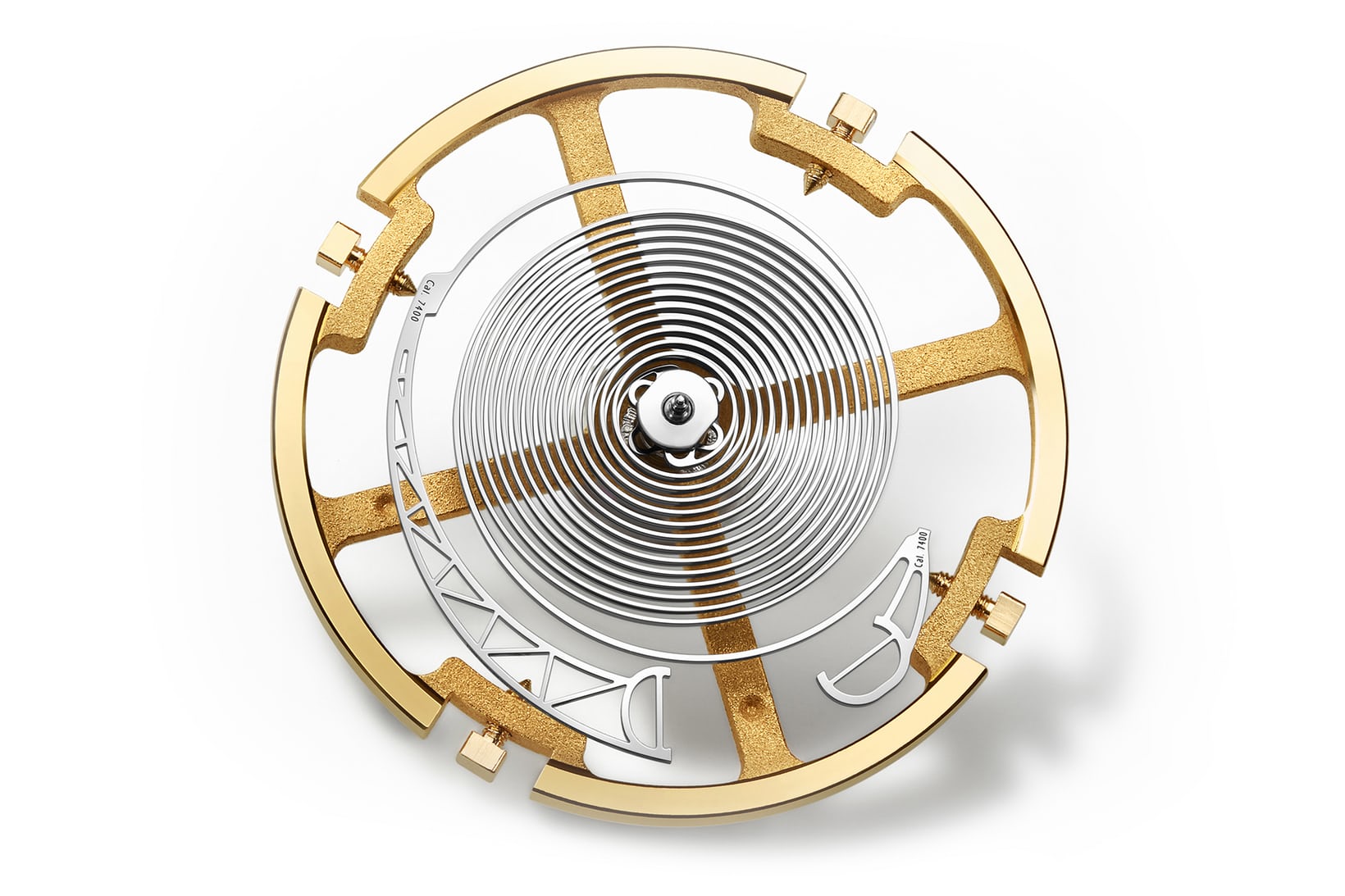

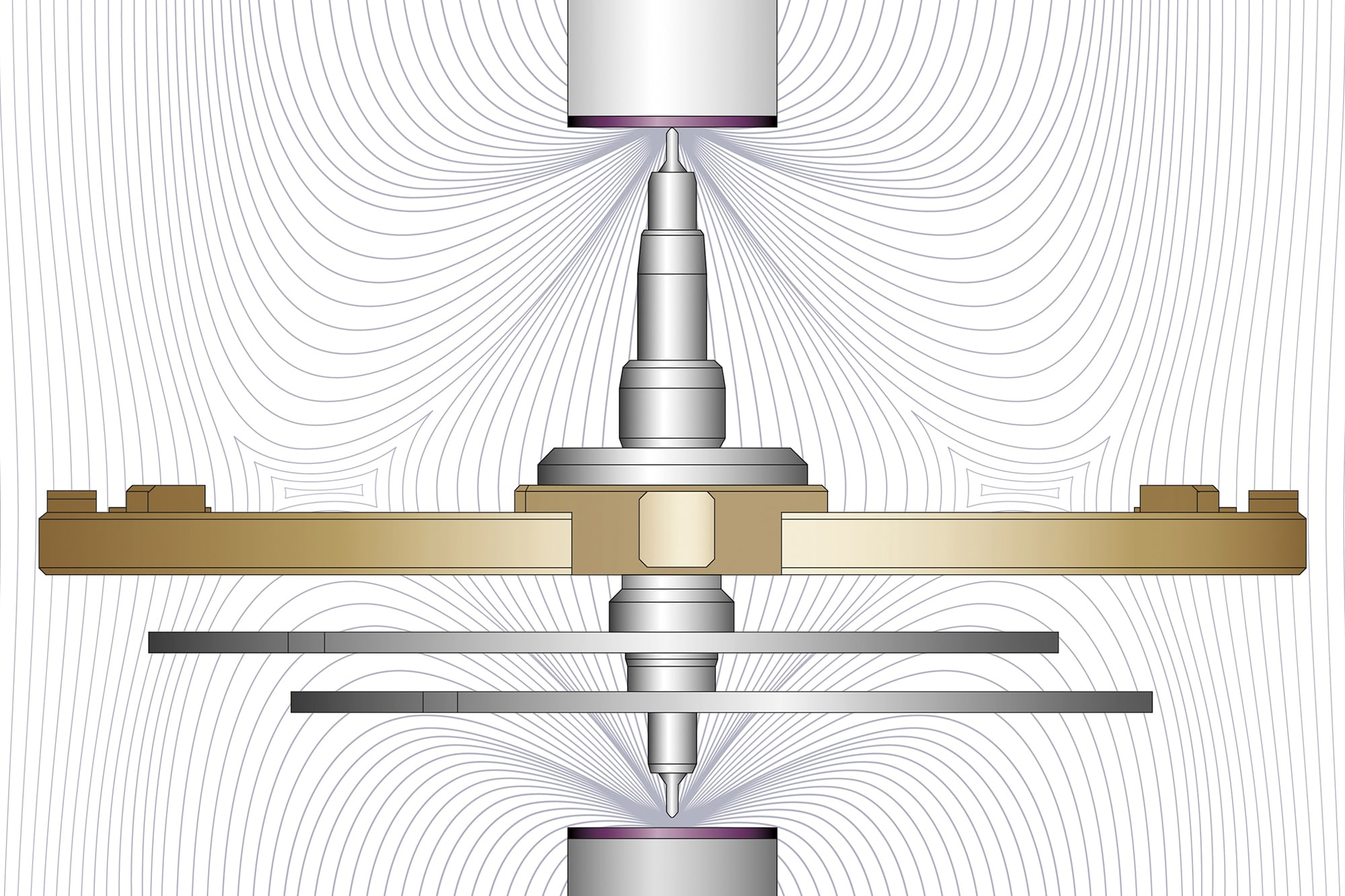

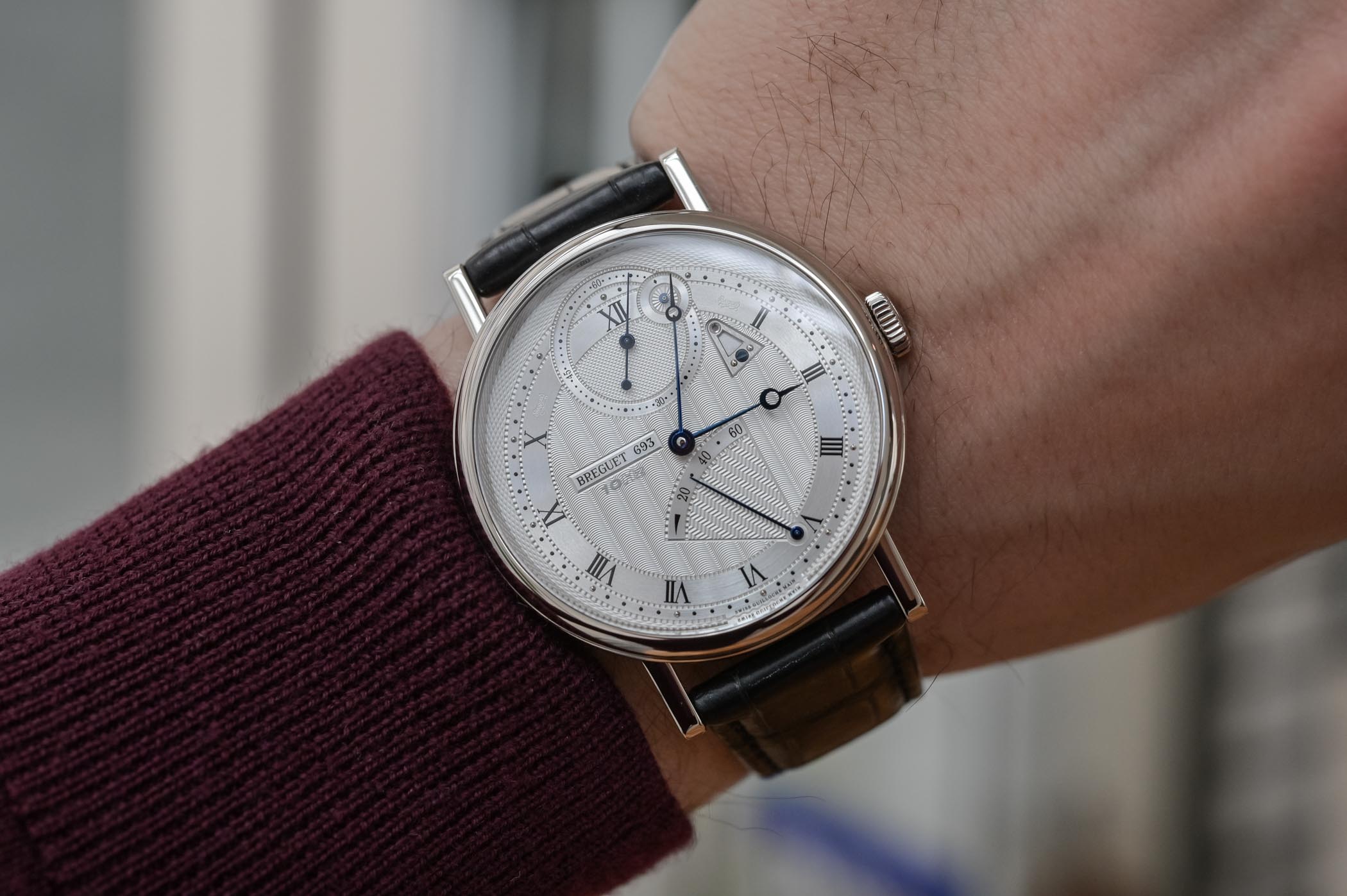
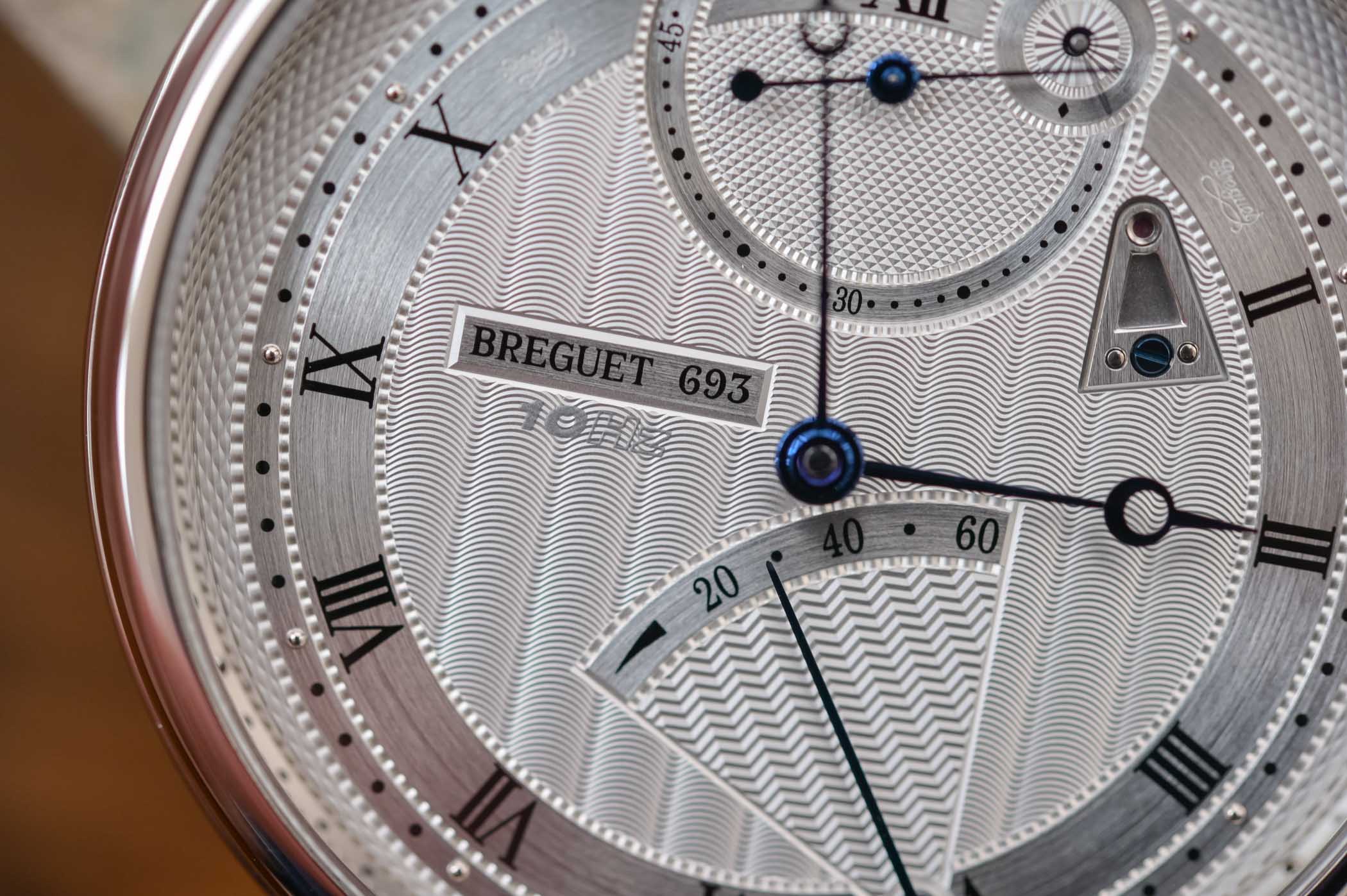
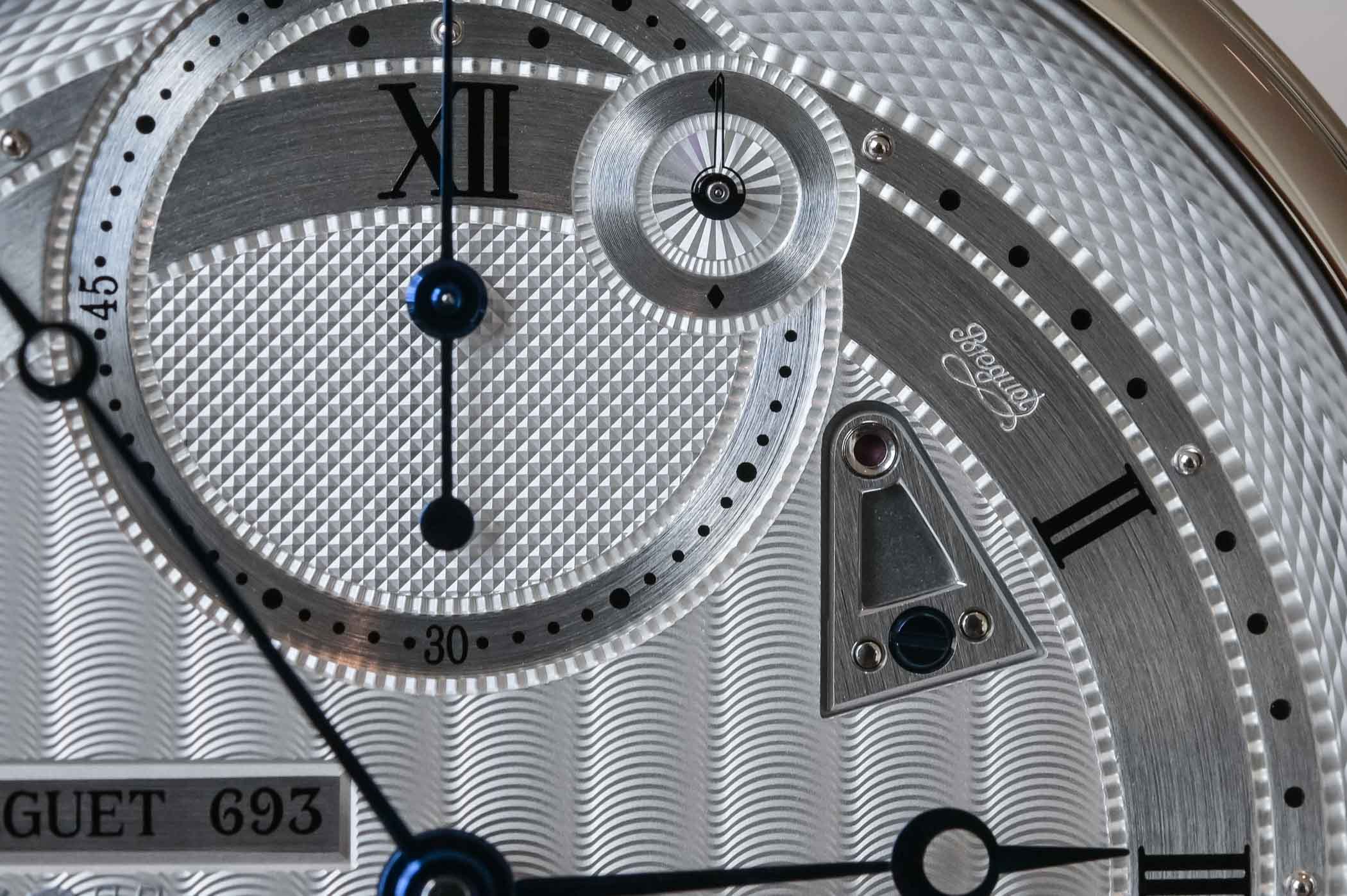
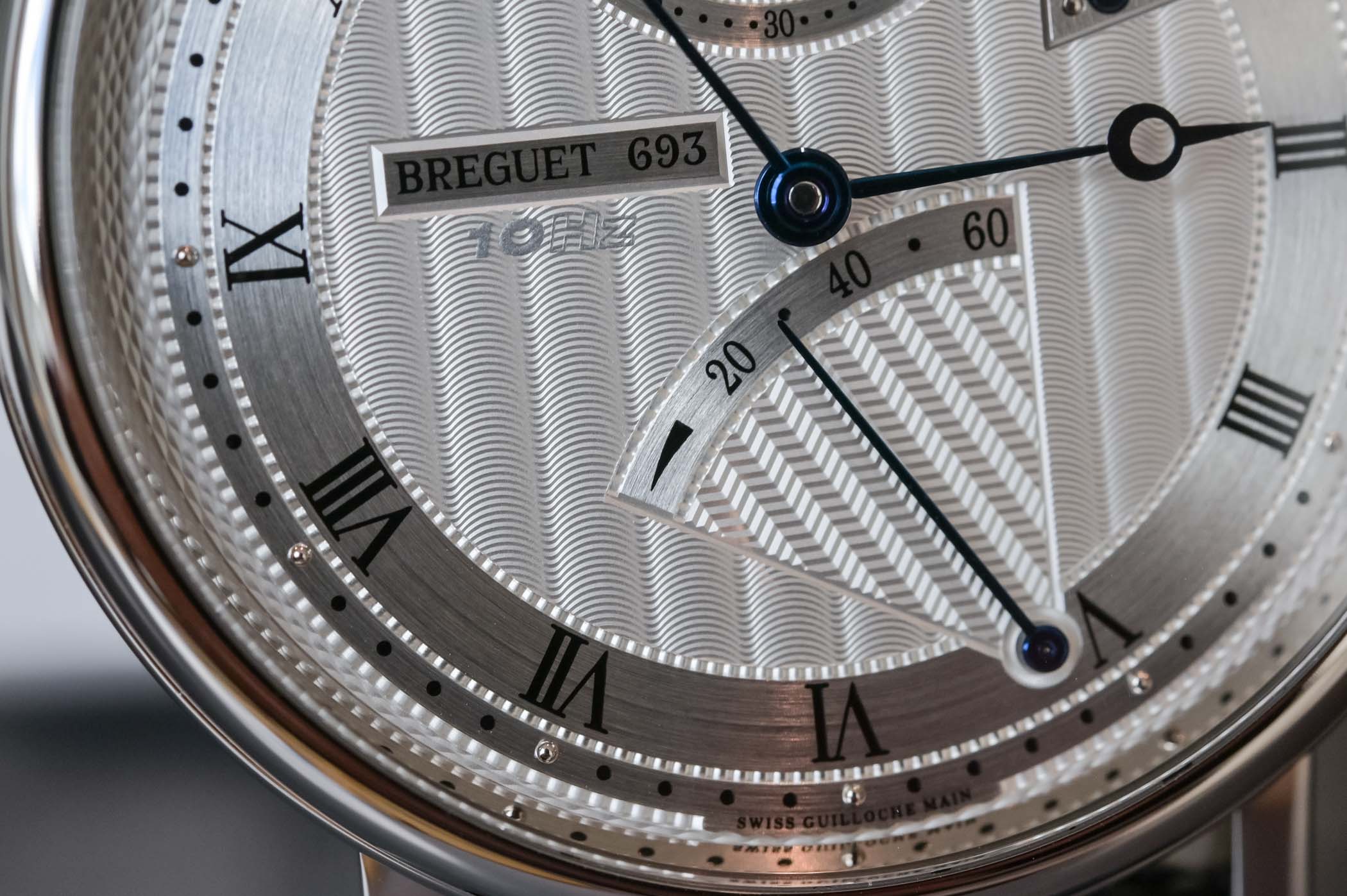
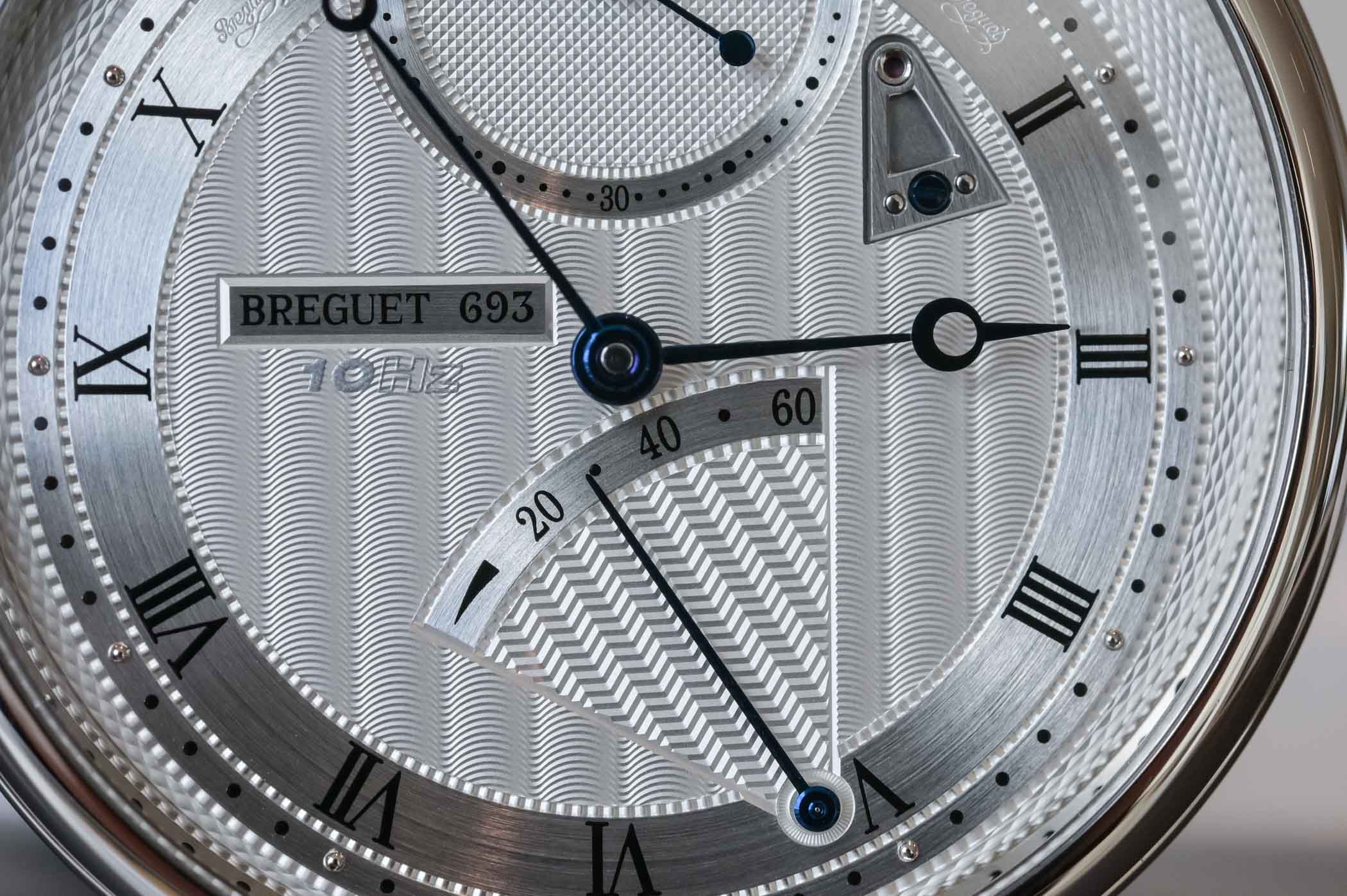

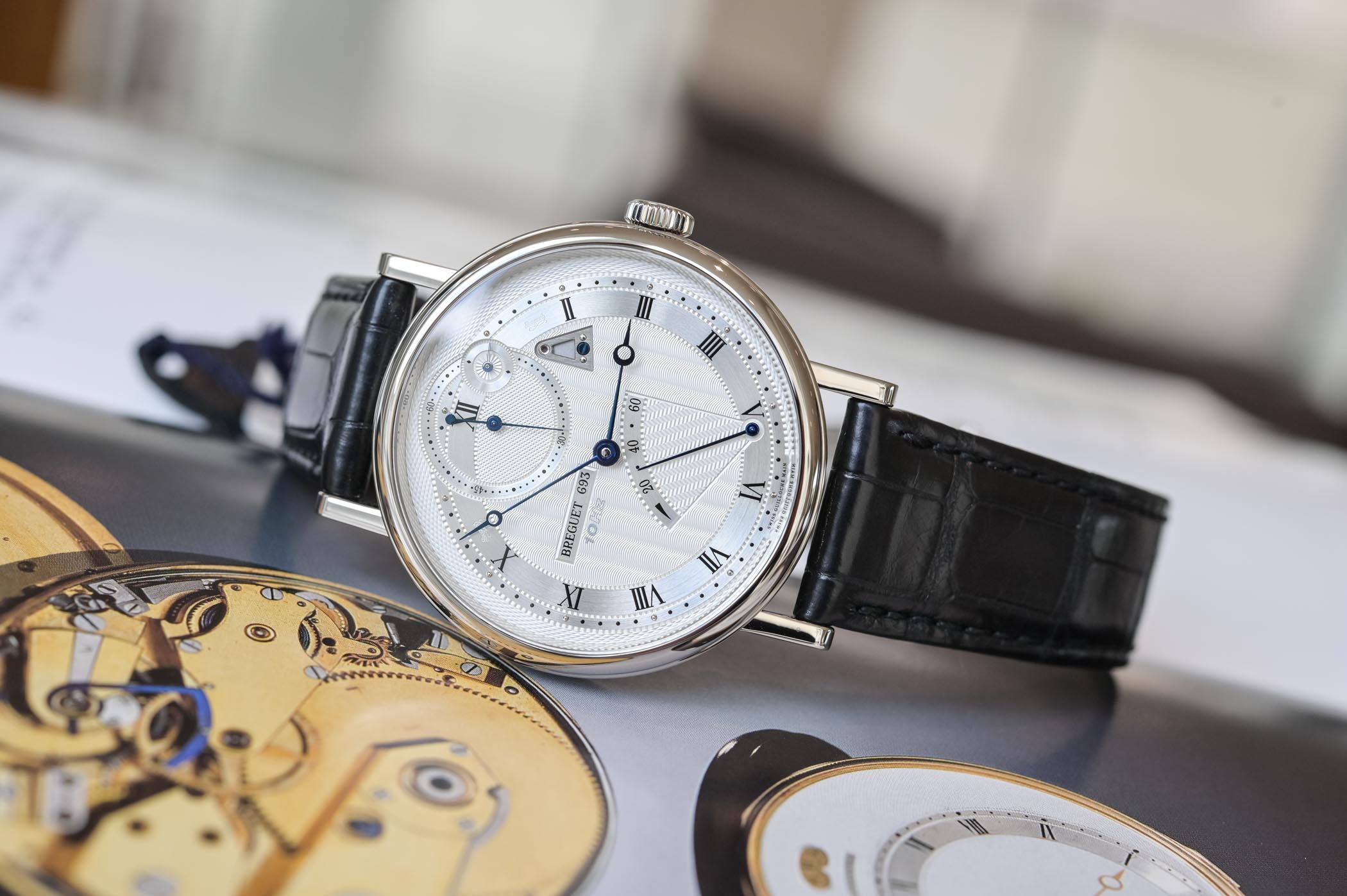
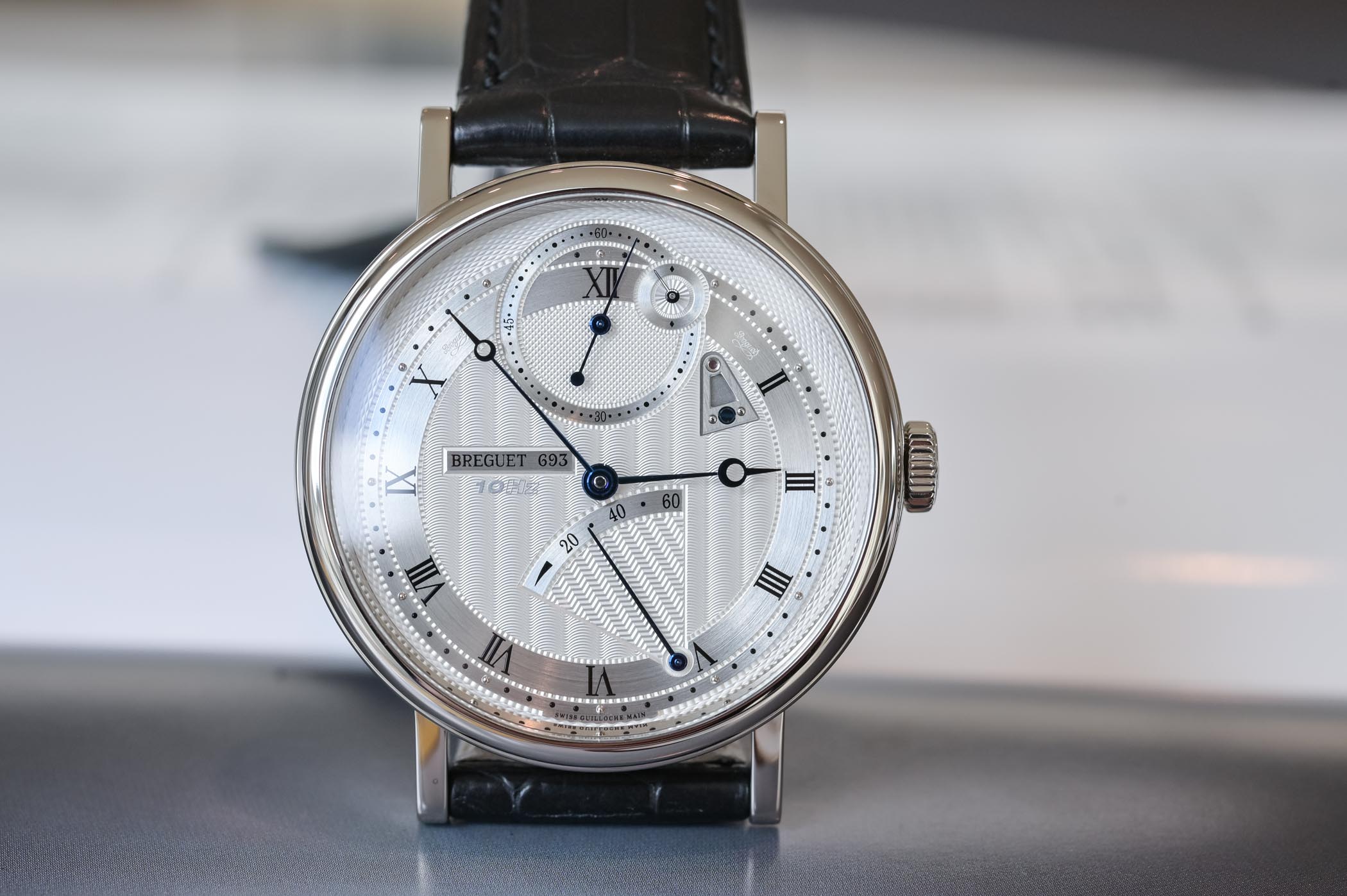

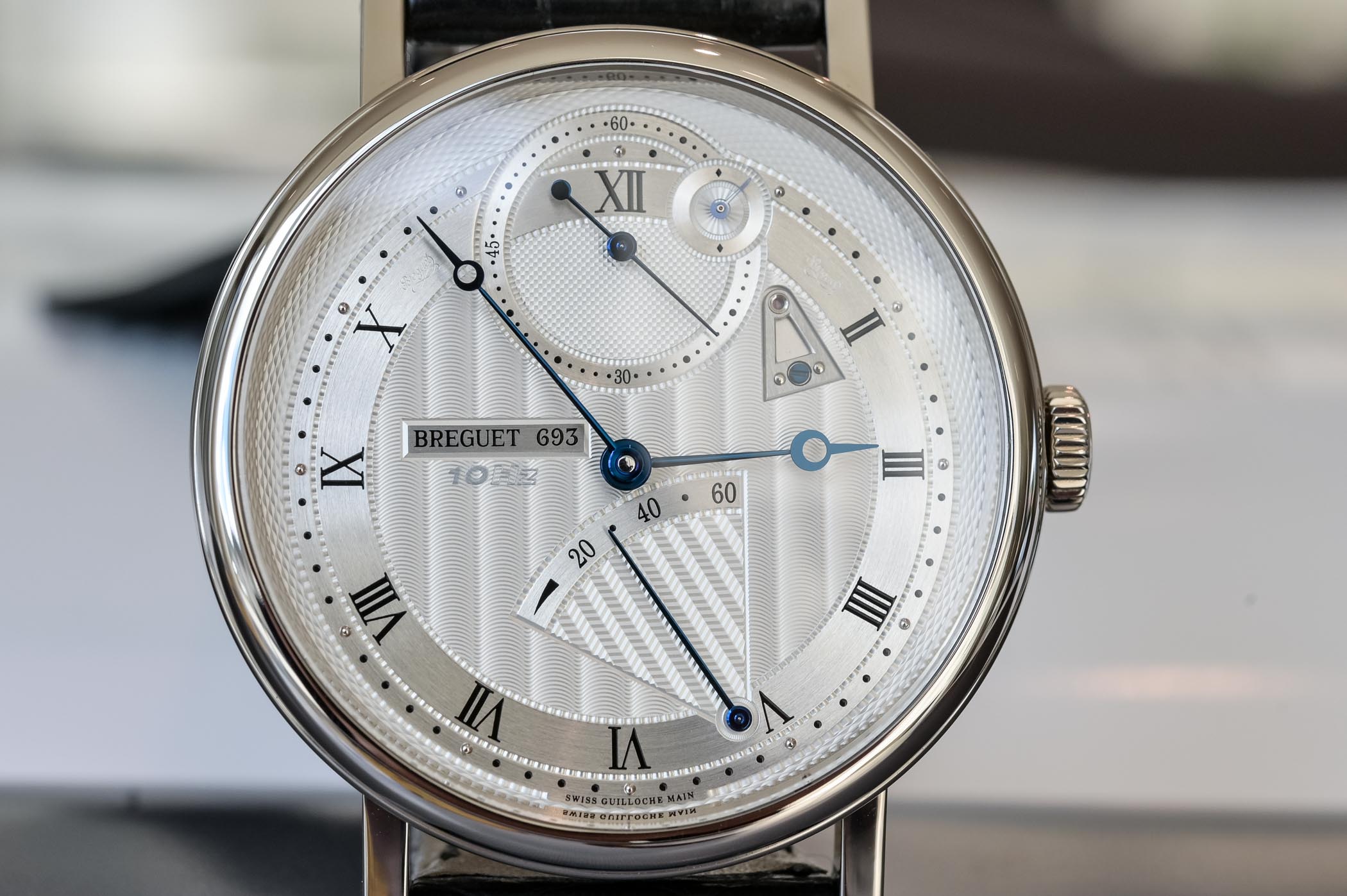
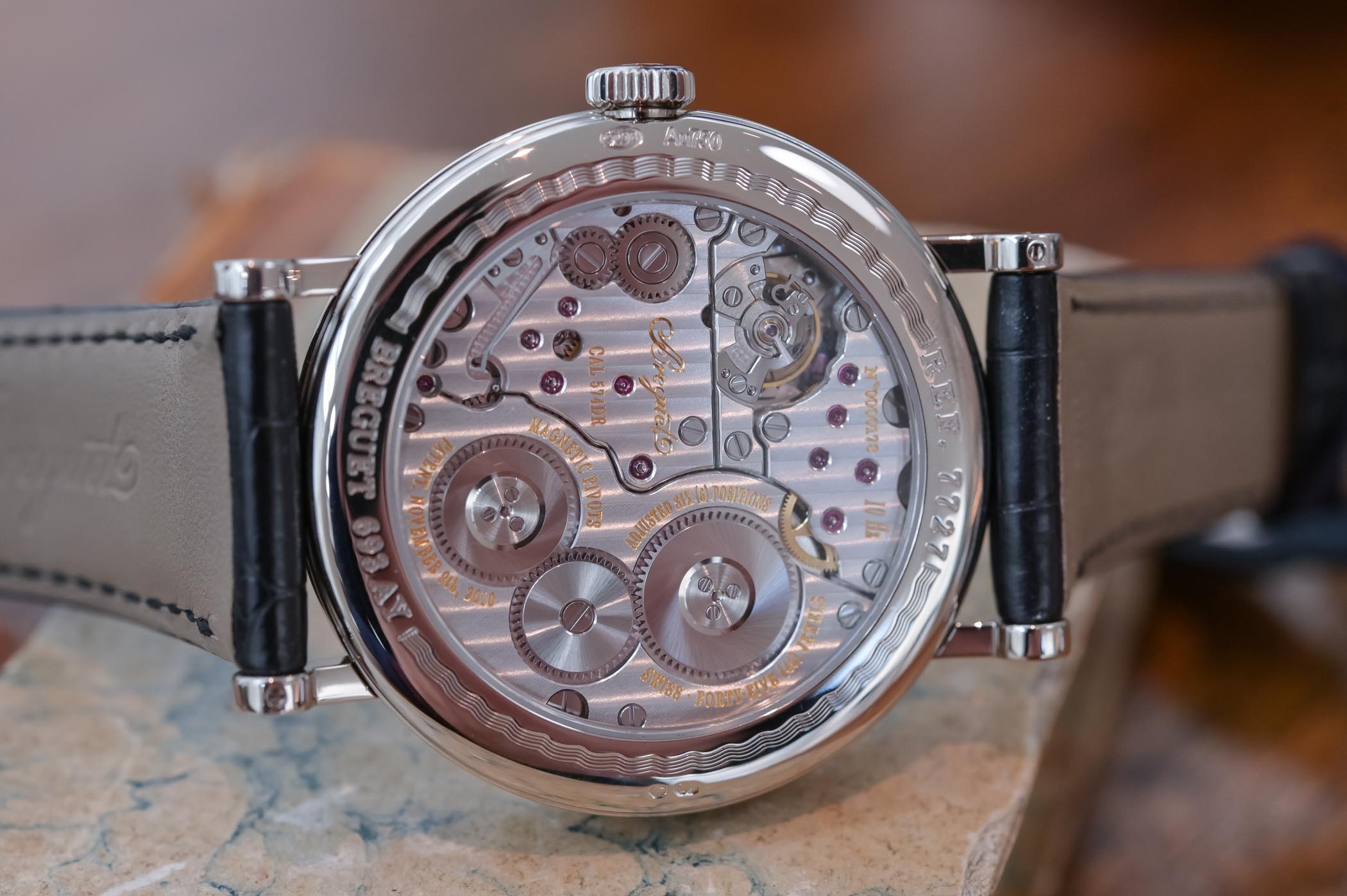




10 responses
<3
Completely agree with the removal of "10Hz" from the dial. Lovely piece, though.
Everyone agrees.or at least—change the typeface, quickly!!
Extraordinary piece of mechanical mastery ! I fully agree with you that the brand is not being valued at its intrinsic value. This is way above what Patek or Lange have ever achieved. It’s not about piling up complications to come up with 20-something complications, it’s about valuable innovation in terms of isochronisme. And that fits perfectly into Breguet’s heritage.
Excellent article Brice… as always ?
Most beautifully elegant classic as well as contemporary looking watch.
For the purity of the design of the dial, the bridge at 2 o’clock disturbs me more than the “10Hz” mention which is very discreet indeed.
@ ORM – thanks 🙂
Interesting article, some fascinating tech. in there. The 10hz is like the “Turbo” badge on the boot of a car, lowers the tone. Reminds me of Roger Smith’ series 3, not as desirable but much easier to come by.
No doubt it’s one of the best innovative and value proposition watches in recent years. But after checking it in the metal, it’s far bigger than I thought. The straight lugs enlarge the watch than it actually is. In the end I choose the Credor Eichi II instead. Comparative technology (if you can accept), cleaner design, better finishing and accuracy.
@Chia-Ming. No one will be mad against you for choosing the Credor. Such a superb watch!
I think this is a superb watch,however I probably would have gone for the credor
@Brice Thanks a lot! Both watches are overlooked and great choices for enthusiasts.